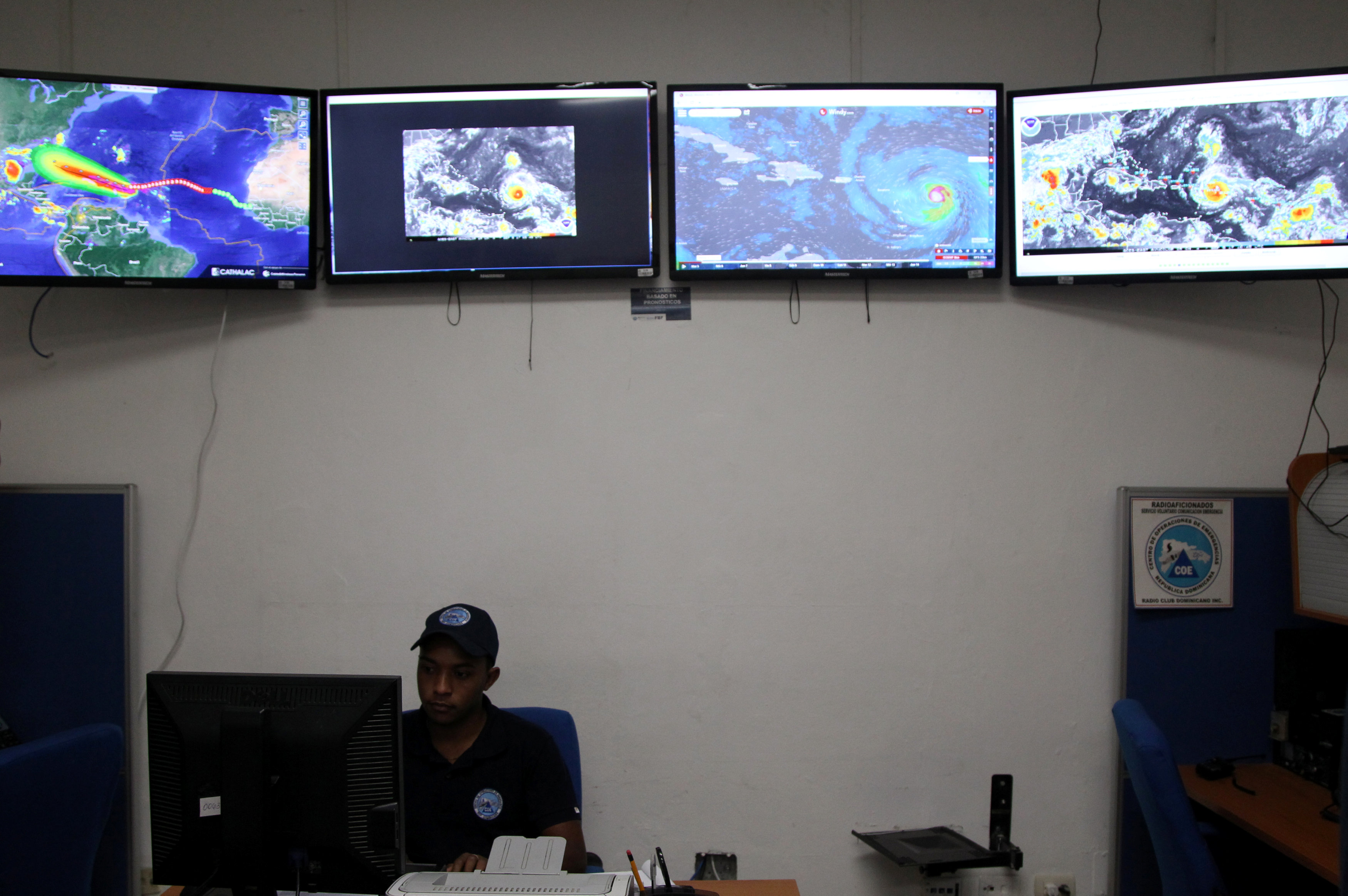
By Delana Isles
PROVIDENCIALES, Turks and Caicos (Reuters) – Hurricane Irma, one of the most powerful Atlantic storms in a century, drove toward Florida on Friday after lashing the Caribbean with devastating winds and torrential rain, killing 19 people and leaving a swathe of catastrophic destruction.
Irma was about 450 miles (724 km) southeast of Miami, Florida, early Friday after saturating the northern coasts of the Dominican Republic and Haiti and pummeling the Turks and Caicos Islands.
The “extremely dangerous” hurricane was downgraded from a Category 5 to a Category 4 early Friday but still packed winds as strong as 150 miles per hour (240 km per hour), the National Hurricane Center (NHC) said in an advisory at 8 a.m EDT (noon GMT).
Irma hit the Bahamas on Friday, where it was forecast to bring 20-foot (six-meter) storm surges before moving to Cuba and then slamming into southern Florida on Sunday.
In Miami, hundreds lined up for bottled water and cars looped around city blocks to buy gas on Thursday. Shortages in the Miami-Fort Lauderdale metropolitan area worsened on Thursday, with sales up to five times the norm.
In Palm Beach, the waterfront Mar-a-Lago estate owned by U.S. President Donald Trump was ordered evacuated, media reported. Trump also owns property on the French side of St. Martin, an island devastated by the storm.
A mandatory evacuation on Georgia’s Atlantic coast was due to begin on Saturday, Governor Nathan Deal said. The storm comes two weeks after Hurricane Harvey struck Texas, claiming around 60 lives and causing property damage estimated at as much as $180 billion in Texas and Louisiana.
Irma ravaged a series of small islands in the northeast Caribbean, including Barbuda, St. Martin and the British and U.S. Virgin Islands, flattening homes and hospitals and ripping down trees.
A Reuters witness described the roof and walls of a solidly built house shaking hard as the storm rocked the island of Providenciales and caused a drop in pressure that could be felt in people’s chests.
Throughout the islands in Irma’s wake, stunned locals tried to comprehend the devastation as they were getting ready for another major hurricane, Jose, a Category 3 due to reach the northeastern Caribbean on Saturday.

A storm batters as Hurricane Irma descends on Providenciales, in the Turks and Caicos Islands, in this still image taken from September 7, 2017 social media video. MANDATORY CREDIT Aneesa Khan/via REUTERS
DEATHS RISE
The death toll from the storm has risen as emergency services got access to remote areas pummeled by heavy winds and rain. French Interior Minister Gerard Collomb said on Friday that nine people were killed and at least seven were missing after the hurricane crashed into France’s Caribbean islands of St. Martin and St. Barthelemy.
“One hundred and twelve people were injured,” Collomb said, adding there could be more victims.
Four people died in the U.S. Virgin islands, a government spokesman said, and a major hospital was badly damaged by the wind. A U.S. amphibious assault ship arrived in the U.S. Virgin Islands on Thursday and sent helicopters for medical evacuations from the destroyed hospital.
A man was reported missing after trying to cross a river in Cerca La Source in Haiti’s Central Plateau region.
On Barbuda one person died and the eastern Caribbean island was reduced “to rubble,” Prime Minister Gaston Browne said. In the British overseas territory of Anguilla, another person was killed and the hospital and airport were damaged, emergency service officials said.
Three people were killed in Puerto Rico and around two-thirds of the population had lost electricity, Governor Ricardo Rossello said after the storm rolled by the U.S. territory’s northern coast. A surfer was also reported killed in Barbados.
The storm passed just to the north of the island of Hispaniola, shared by the Dominican Republic and Haiti, causing damage to roofs, flooding and power outages as it approached the impoverished Haitian side, but did not make landfall there..
Cuba evacuated some of the 51,000 tourists visiting the island, particularly 36,000 people at resorts on the northern coast. In Caibarien, a coastal town in the hurricane’s predicted path, residents headed farther inland.
Irma is the strongest hurricane recorded in the Atlantic Ocean and one of the five most forceful storms to hit the Atlantic basin in 82 years, according to the NHC.
(For a graphic on historical perspective of Irma, click: http://fingfx.thomsonreuters.com/gfx/rngs/STORM-HARVEY/010050K2197/index.html)
(Reporting by Makini Brice in Cap-Haitien, Haiti, Bate Felix and Dominique Vidalon in Paris, Brendan O’Brien in Milwaukee; Writing by Dan Flynn; Editing by Larry King and Jeffrey Benkoe)


















